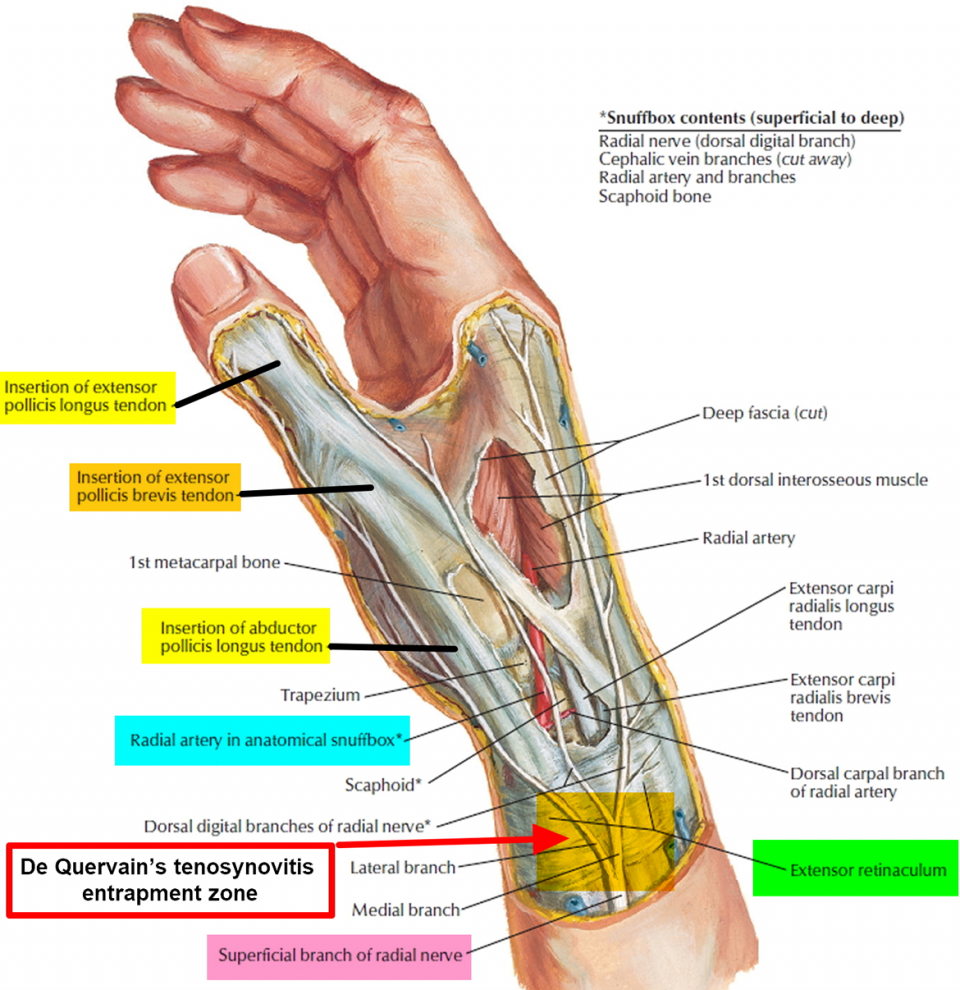Quervain’s Tenosynovitis
The condition called de quervains tenosynovitis causes pain on the inside of the wrist and forearm just above the thump.
- It is the inflammation of the fluid filled sheath that surrounds a tendon
- This is the common problem effecting the wrist and usually easy to diagnose
- Tendons connect muscle to the born and the muscles pull on tendons for movements.
- The muscles connected to anterior posterior ligaments and extensor pollicis brevis tendons are on the back of the forearm.
- APL & EPB (Refer above for the abbrev) tendons travel inside edge of the wrist.
- They pass through a tunnel near the end of the forearm.
- This tunnel is lined with a slippery coating called tenosynovium
- The inflammation of the tenosynovium and tendon is called tenosynovitis
- In this condition the inflammation constricts the movement of the tendons within the tunnel.
Causes:
- Repeated thump motions such as grasping, pinching, squeezing
- Arthritis or injury
- Introduction of bacteria into a sheath through a small penetrating wound such as that made by the point of needle or thorn.
Symptoms:
- Soreness of thumb , side of the forearm and near the wrist.
- The two tendons may move through the constricted tunnel. These causes noise while moving hand called crepitus.
- Pain and swelling
- Difficulty in moving joint.
Diagnosis:
Flnklestein test
- Bend your thumb into your palm
- Grasp the thumb with in your fingers making a fist.
- Bend your wrist away from your thumb
- If you feel pain over the tendons to the thumb the test is positive.
Physical examination shows swelling
Stretching tendon to check whether there is pain.

Treatments:
- Stop all activities that causes your symptoms
- Take break when doing repeated hand and thumb movements
- Avoid grasping , wringing or turning and twisting movements of the wrist.
- After injury is evaluated wear a special forearm and thumb splint called a thumb – spica spint.
- Use Anti inflammation drugs
- Stretching and strengthening exercise to wrist and forearm.



